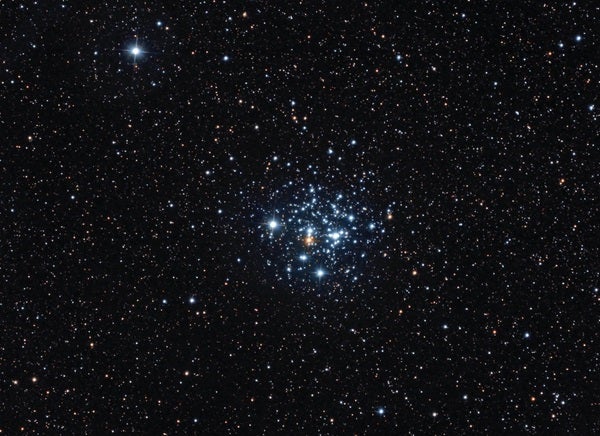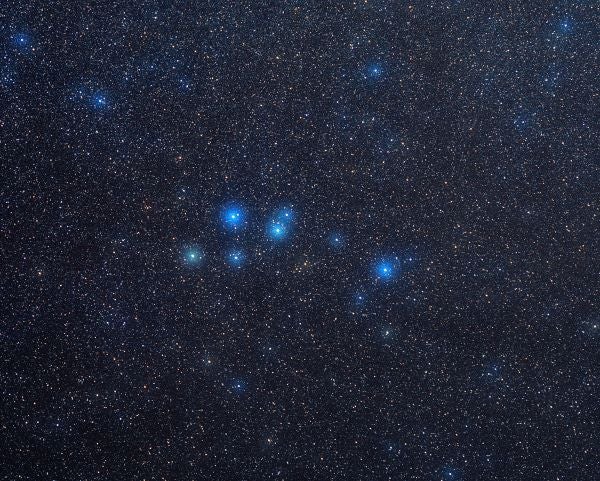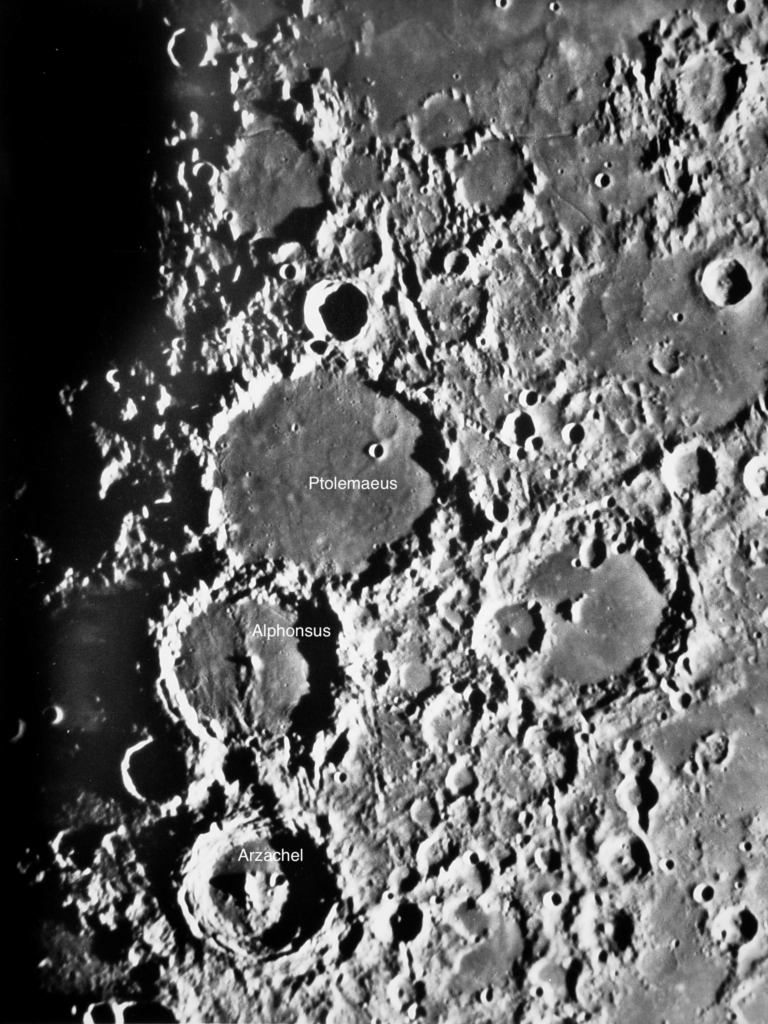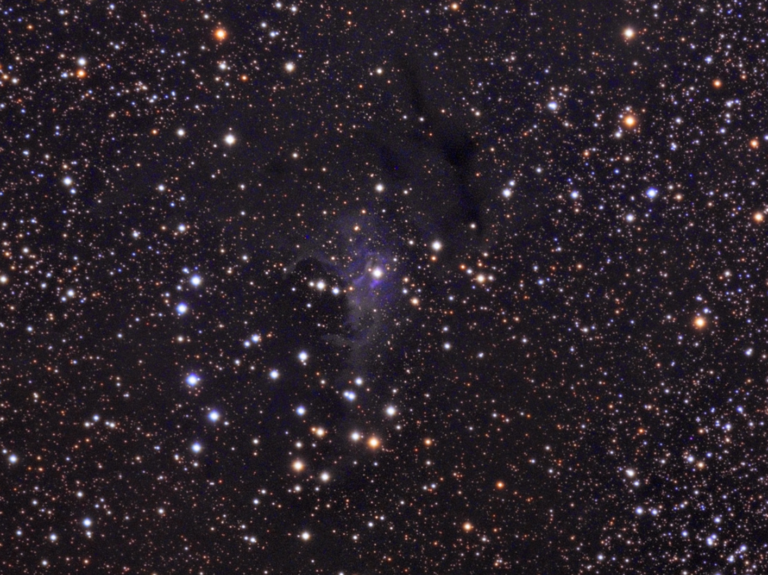If you’re an amateur astronomer planning to travel south of the equator, one of the best celestial sights you can point your telescope at is the Jewel Box (NGC 4755). This collection of stars ranks as one of the sky’s finest open clusters. But it’s not because of its size (10′ in diameter) or brilliance (magnitude 4.2), nor even the number of stars it contains (more than 100). The reason the Jewel Box enthralls observers is its colorful collection of stars.
Most open clusters contain hot, recently formed stars, which look blue through a telescope to most observers. The Jewel Box, however, contains more than half a dozen stars of various shades of blue, yellow, and orange. Astronomers think NGC 4755, at 14 million years old, is one of the youngest open clusters. It lies some 6,400 light-years from Earth.
French astronomer Nicolas Louis de Lacaille discovered NGC 4755 with a ½-inch refractor in 1751, when he traveled to the Cape of Good Hope in South Africa. But English astronomer Sir John Herschel’s eloquent description — “a superb piece of fancy jewellery” — led to other astronomers coining the popular name Jewel Box.
NGC 4755 has yet another name: the Kappa (κ) Crucis Star Cluster. At magnitude 5.9, Kappa Crucis reigns as the second-brightest star in the cluster. The only other cluster member that tops it — by an almost indiscernible 10 percent — is SAO 252069, which glows at magnitude 5.8.
The Jewel Box lies 1° southeast of magnitude 1.3 Mimosa (Beta [β] Crucis). Sharp-eyed observers at a dark site will spot the cluster without optical aid as a glow that looks like an out-of-focus star.
Most observers viewing NGC 4755 through 4- to 8-inch telescopes with an eyepiece that provides a wide field of view (try a magnification around 50x) see the famous A asterism, which is formed by the stars closest to the center. Take in the whole cluster, and you’ll see 10 or more colorful stars, another 20 white ones, and a faint backdrop of more than 100 other cluster members.
Make sure to explore Astronomy’s full list of 101 cosmic objects you must see. New entries will be added each week throughout 2022.
To get the latest astronomical news and observing content delivered directly to your door, subscribe to Astronomy magazine today!










